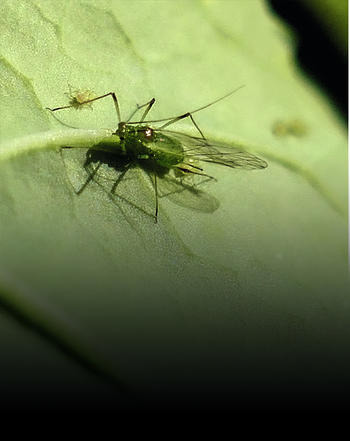Aphid
- Aphids usually up to 2 mm. Aphids are used for spreading. Mass reproduction takes place through unwinged stages.
- Most common aphids in rapeseed:
- green peach aphids, almost all year round, important as virus carriers in autiumn.
- mealy cabbage aphid, for ripening in colonies, very low damage potential.
- direct damage due to sucking activity only possible in case of heavy mass occurrence. Largest potential for damage due to transmission of the turnip yellows virus (TuYV)
CONTROL BENCHMARK
- Use of insecticides against the aphids are often not very effective because of frequent resistance to common groups of active substances (pyrethroids).
- Aphids that are hidden on the undersides of the leaves are difficult to control. In case of early heavy infestation, use approved systemic insecticide.
- Virus infection (TuYV) causes growth reduction. Reddish coloration of leaf margins may also have other causes (wetness, cold, P deficiency, etc.). Slight yield reductions possible with high infestation.
PREVENTION
- Rapeseed varieties with partial virus resistance are more vigorous and yield more stable even under high virus infestation pressure. Even tolerant varieties are able to compensate despite infestation.
- Aphids have the most natural enemies. E.g. ichneumon flies, ladybirds, predatory bugs, larvae of hoverflies, certain gall midges, lacewings etc.




